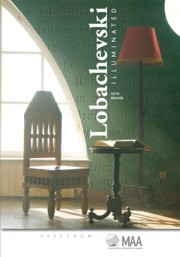Book contents
- Frontmatter
- Contents
- Introduction
- Note to the Reader
- Acknowledgements
- Theory of Parallels — Lobachevski's Introduction
- Theory of Parallels — Preliminary Theorems (1–15)
- Theory of Parallels 16: The Definition of Parallelism
- Theory of Parallels 17: Parallelism is Well-Defined
- Theory of Parallels 18: Parallelism is Symmetric
- Theory of Parallels 19: The Saccheri-Legendre Theorem
- Theory of Parallels 20: The Three Musketeers Theorem
- Theory of Parallels 21: A Little Lemma
- Theory of Parallels 22: Common Perpendiculars
- Theory of Parallels 23: The π-function
- Theory of Parallels 24: Convergence of Parallels
- Theory of Parallels 25: Parallelism is Transitive
- Theory of Parallels 26: Spherical Triangles
- Theory of Parallels 27: Solid Angles
- Theory of Parallels 28: The Prism Theorem
- Theory of Parallels 29: Circumcircles or Lack Thereof (Part I)
- Theory of Parallels 30: Circumcircles or Lack Thereof (Part II)
- Theory of Parallels 31: The Horocycle Defined
- Theory of Parallels 32: The Horocycle as a Limit-Circle
- Theory of Parallels 33: Concentric Horocycles
- Theory of Parallels 34: The Horosphere
- Theory of Parallels 35: Spherical Trigonometry
- Theory of Parallels 36: The Fundamental Formula
- Theory of Parallels 37: Plane Trigonometry
- Bibliography
- Appendix: Nicolai Ivanovich Lobachevski's Theory of Parallels
- Index
- About the Author
Theory of Parallels 37: Plane Trigonometry
- Frontmatter
- Contents
- Introduction
- Note to the Reader
- Acknowledgements
- Theory of Parallels — Lobachevski's Introduction
- Theory of Parallels — Preliminary Theorems (1–15)
- Theory of Parallels 16: The Definition of Parallelism
- Theory of Parallels 17: Parallelism is Well-Defined
- Theory of Parallels 18: Parallelism is Symmetric
- Theory of Parallels 19: The Saccheri-Legendre Theorem
- Theory of Parallels 20: The Three Musketeers Theorem
- Theory of Parallels 21: A Little Lemma
- Theory of Parallels 22: Common Perpendiculars
- Theory of Parallels 23: The π-function
- Theory of Parallels 24: Convergence of Parallels
- Theory of Parallels 25: Parallelism is Transitive
- Theory of Parallels 26: Spherical Triangles
- Theory of Parallels 27: Solid Angles
- Theory of Parallels 28: The Prism Theorem
- Theory of Parallels 29: Circumcircles or Lack Thereof (Part I)
- Theory of Parallels 30: Circumcircles or Lack Thereof (Part II)
- Theory of Parallels 31: The Horocycle Defined
- Theory of Parallels 32: The Horocycle as a Limit-Circle
- Theory of Parallels 33: Concentric Horocycles
- Theory of Parallels 34: The Horosphere
- Theory of Parallels 35: Spherical Trigonometry
- Theory of Parallels 36: The Fundamental Formula
- Theory of Parallels 37: Plane Trigonometry
- Bibliography
- Appendix: Nicolai Ivanovich Lobachevski's Theory of Parallels
- Index
- About the Author
Summary
In this final proposition, Lobachevski develops the trigonometric formulae of the imaginary plane. Although we can now replace the π-functions in any trigonometric equation with hyperbolic functions, Lobachevski chooses not to make these helpful translations. This lack, coupled with some awkward derivations and peculiar notation, make his work in this section appear particularly opaque. This is unfortunate, since the conclusions of this section are actually quite simple and admit easy proofs. To emphasize this fact, I shall derive Lobachevski's results in π-free notation and deviate from his unnecessarily convoluted proofs of the two laws of cosines.
The Need for a New Rectilinear Relation
We can interpret the five gems as statements about right spherical triangles or right rectilinear triangles. In their spherical interpretation (see TP 35 notes), they specify the following trigonometric relationships:
A relation among the triangle's three sides. (SG 5)
A relation among the two acute angles and a leg. (SG 3,4)
A relation among the hypotenuse, a leg, and the
acute angle they do not include. (SG 1,2)
In the notes to TP 35, we developed all of spherical trigonometry from these relationships. Naturally, as soon as we have equations that specify the same three relations for right rectilinear triangles, we will be able to develop all of plane trigonometry by an analogous procedure.
- Type
- Chapter
- Information
- Lobachevski Illuminated , pp. 177 - 196Publisher: Mathematical Association of AmericaPrint publication year: 2011



